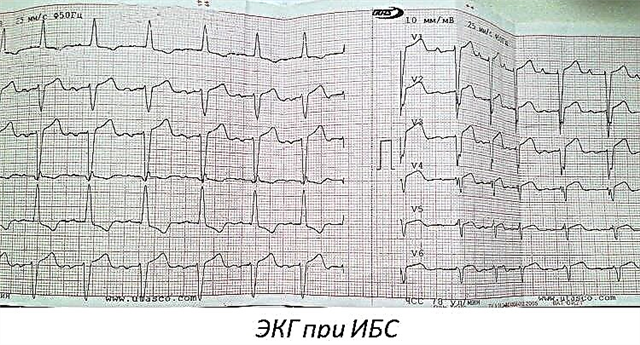Most of the rhinitis manifests itself as mucous or purulent discharge from the nasal cavities. However, there are cases of referral to an otolaryngologist about the appearance of a bloody impurity in the snot. This fact should not scare a person too much, but it still requires specialist advice. Snot with blood in an adult can indicate both the influence of negative environmental factors and diseases of the internal organs.
Blood from the nose with a runny nose may come out in a small volume or in the form of nosebleeds. Often, the causes of pathology are hidden in the trauma of local blood vessels during "blowing out". In this case, the snot comes out streaked with blood, but without clots.
Now let's take a closer look at why a runny nose is manifested by rhinorrhea with bloody discharge.
Causes
 The causes of profuse nosebleeds and slight damage to the vessels of the nasal cavities are due to the peculiarities of the structure of the nose. These include the branched circulatory network in the nasopharynx, due to which a number of physiological functions are provided.
The causes of profuse nosebleeds and slight damage to the vessels of the nasal cavities are due to the peculiarities of the structure of the nose. These include the branched circulatory network in the nasopharynx, due to which a number of physiological functions are provided.
The mucous membrane of the nasal cavities is covered with ciliated epithelium, which protects the body. It consists in preventing the penetration of infectious pathogens into the deep parts of the respiratory tract, by retaining microbes with cilia in the nasopharynx area. Due to the constant movement of the cilia and the secreted secretion, the nasal cavities are cleared of dust, mucus with microbes, and toxins.
The branched bloodstream in the nasal cavities also warms the air. When breathing, cold unpurified air enters the nasal passages, which, as it passes through the upper parts of the respiratory tract, warms up and becomes a comfortable temperature.
Blood with a runny nose is most often due to the superficial arrangement of blood vessels in the nasal cavities.
In adults, the appearance of a bloody impurity in the nasal discharge depends on the structural features of the capillary network, the state of the epithelium of the nasopharynx, and the moisture of the mucous membrane.
Bloody nasal discharge usually occurs due to capillary fragility and frequent use of vasoconstrictors.
Provoking factors
The causes of bloody rhinitis include individual features of the structure of the nasopharynx, anomalies in the development of congenital genesis, as well as provoking factors that temporarily have a negative effect on the nasal mucosa. Do not forget about diseases of the internal organs, which affect the state of blood vessels, blood, nasal mucosa.
Why does a runny nose with blood appear?

- vitamin deficiency, hypovitaminosis associated with a decrease in the level of vitamins in the body. The cause of the pathology can be digestive dysfunction, which makes it difficult to digest and absorb nutrients. In addition, the human diet influences the fortification of the body. Lack of vitamins leads to the fragility of blood vessels;
- bad habits. A runny nose with blood is often observed in long-term smokers. The negative effect of toxic products released during the combustion of tobacco damages the nasal mucosa and predisposes the appearance of vascular fragility;
- severe intoxication of the body associated with primary infection, renal, hepatic dysfunction, the presence of a chronic focus of infection or the use of toxic products;
- dry, hot, polluted or too humid air leads to a decrease in the protective functions of the nasal mucosa, which predisposes to trauma to local blood vessels. This group also includes harmful working conditions associated with the release of toxic substances, dust particles or allergens into the air. After several years of daily contact with a provoking factor, the nasal mucosa undergoes transformation, losing cilia. When the glands are damaged, mucus begins to be produced intensively, provoking the appearance of rhinorrhea. In the case of atrophic changes in the mucous membrane, glands, it is possible to reduce the production of protective mucus;
- bloody snot can be observed with protracted rhinitis of viral origin. Vascular fragility is a consequence of the toxic effect of infectious pathogens;
- nasal discharge with blood bothers with chronic sinusitis, when the infection persists in the mucous membrane of the paranasal sinuses, maintaining a sluggish inflammation. With pathology, green snot is disturbed. In this case, yellow or green shades of mucus indicate an admixture of pus;
- with an increase in intracranial, blood pressure, bleeding from the nose appears due to changes in vascular tone. Peripheral vessels narrow, become less elastic, which increases the risk of violation of their integrity. Vascular diseases also contribute to this;
- diseases of the circulatory system, which are based on a change in the indicators of the coagulation system. Violation of hemostasis leads to the appearance of blood spots in the nasal discharge. These diseases include hemophilia, thrombocytopenia and other congenital diseases of the blood system;
- papillomas in the nasal cavities - can be easily injured when blown out;
- snot with blood can be observed after prolonged exposure to the open rays of the sun, severe stress or heavy physical exertion;
- blood in the snot is noted due to a decrease in blood clotting against the background of prolonged use of anticoagulants, antiplatelet agents;
- mechanical factor (injury, excessive efforts to clear the nose of crusts or mucus);
- streaks of blood with snot can stand out with atrophic form of rhinitis. The disease develops as a result of prolonged use of intranasal drops with a vasoconstrictor effect. A sign of pathology is dryness of the mucous membrane, the appearance of crusts in the nose and an admixture of blood in the snot;
- poor living conditions. If the air in the room is dry, the nasal mucosa dries up, which is why it is not always possible to remove mucus from the nose without traumatizing the blood vessels;
Blood from one nostril is released in case of injury to the mucous membrane of one nasal passage.
Prevention Tips
Yellow snot with bloody streaks indicates an infection in the nasal cavities. To prevent bleeding and reduce the risk of nosebleeds, it is recommended:
- control the humidity in the room. For humidification, you can use a special device;
- carry out wet cleaning in the room at least two to three times a week;
- strictly follow the doctor's recommendations on dosages and duration of taking medications that affect blood clotting;
- timely treat acute diseases of the nose, preventing the chronicization of the infectious, inflammatory process;
- eat right, enriching your diet with vitamin products;
- quit smoking;
- control the duration of the use of intranasal drops with a vasoconstrictor effect;
- use protective equipment in hazardous work;
- avoid the influence of stress factors;
- control the level of blood pressure, physical activity;
- carefully clean the nasal passages by "blowing out" or mechanical cleaning.
We have examined the most common causes of violation of the integrity of the vessels of the nasal cavities.There are much more reasons for the appearance of blood streaks in the snot, therefore, when blowing out blood, you should consult a doctor. The disease can be cured only by eliminating the negative influence of the provoking factor.



